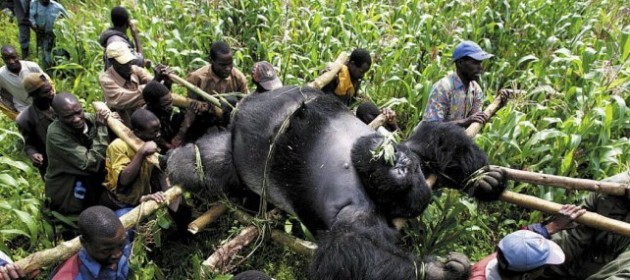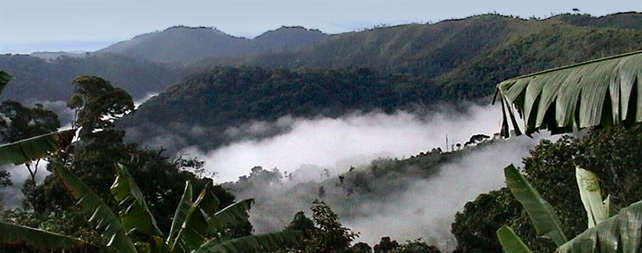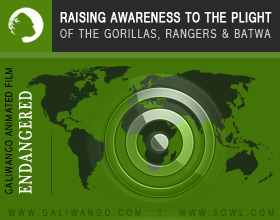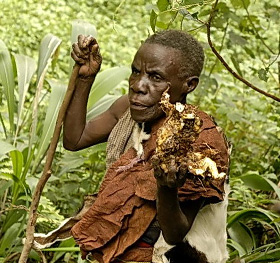

Mountain Gorillas ~ A tragic Past, and a Delicately Hopeful Future
WWF Gorilla Field Report: Gorillas and other great apes are a WWF priority species. WWF treats priority species as one of the most ecologically, economically and/or culturally important species on our planet. As such, we are working to ensure all great apes can live and thrive in their natural habitats.
WWF ~ After a dramatic decline in numbers following their scientific discovery in 1902, dedicated conservation initiatives have ensured that mountain gorilla numbers are now slowly increasing.
Key facts
Common names
Mountain gorilla; Gorille de montagne (Fr); (Sp)
Scientific name
Gorilla beringei beringei
Location
Virunga mountains, Democratic Republic of the Congo, Rwanda and Uganda; Bwindi Impenetrable National Park, Uganda
Population
Approximately 786 individuals
Status
Critically Endangered
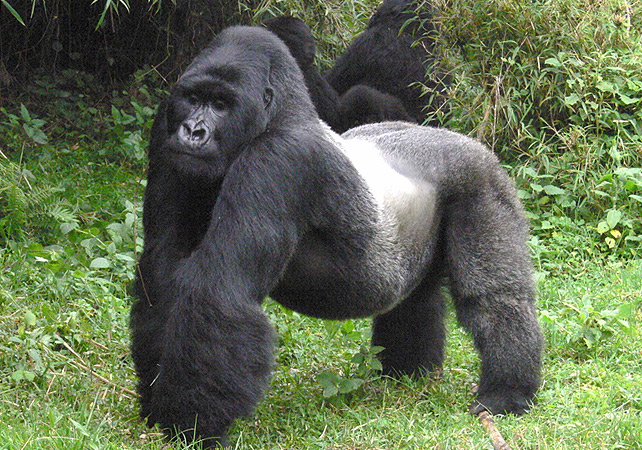
Physical description
The mountain gorilla became known to science on 17 October 1902, and is a subspecies of eastern gorilla. It has longer hair, jaws and teeth, but slightly shorter arms, than the other subspecies, the eastern lowland gorilla. Adult males grow a patch of silver hair on their back and hips, giving them the name ‘silverback’.
Size: On average, adult males weigh 160 kg, and adult females 98 kg.
Gorillas on volcanoes
Mountain gorillas are found at high altitudes (2,500-4,000 m) in montane forests, as well as bamboo forests.
Social structure
A group of mountain gorillas usually consists of a single dominant silverback male, three adult females, and 4-5 offspring. There is an overlap in group territories and the silverback generally defends his group rather than his territory.
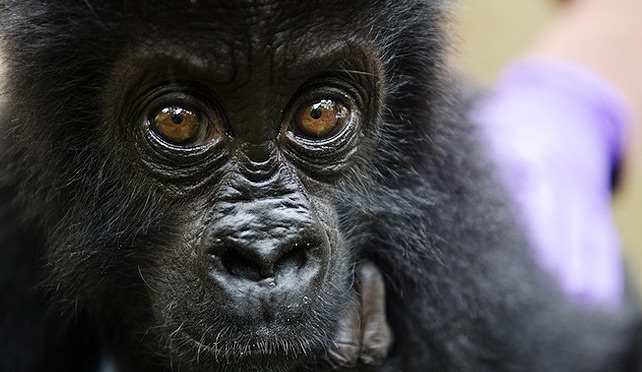
Population & distribution
Mountain gorillas are found in two separate locations: the Virunga range of extinct volcanic mountains on the borders of the Democratic Republic of Congo (DRC), Rwanda and Uganda, and in the Bwindi Impenetrable National Park in Uganda. Some primatologists believe the Bwindi gorillas may be a separate subspecies.
Previous population
In the 100 years since its discovery, the mountain gorilla has endured uncontrolled hunting, war, disease, destruction of its forest habitat, and capture for the illegal pet trade.
These factors led to a dramatic decline in numbers. Indeed, there were fears that the mountain gorilla would become extinct in the same century it was discovered.
Current population
Thanks to conservation efforts, the population of mountain gorillas has increased from 620 individuals in 1989 to around 786 individuals today. This number is likely to be accurate, as these animals have been intensely monitored since the 1950s.
- The Virunga population numbers 480, and lives at altitudes ranging from 2,300-4,500 m. Most of these gorillas range within the southern part of Virunga National Park, DRC, and the Volcanoes National Park (Parc National des Volcans), northern Rwanda, while a few use the Mgahinga National Park, southwestern Uganda.
- The Bwindi population lives at elevations of 1,500- 2,300 m. A 2006 census recorded 302 individuals. Additionally, four orphaned mountain gorillas currently reside in a sanctuary in Uganda.
HABITAT
Tropical and Subtropical Moist Broadleaf ForestsBiogeographic realm
AfrotropicalRange States
Democratic Republic of Congo (DRC), Rwanda, UgandaGeographical Location
Central AfricaEcological Region
Albertine Rift Montane Forest
VIDEOS
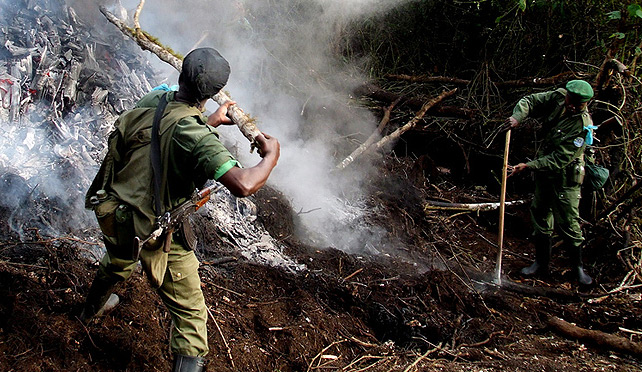
What are the main threats?
Habitat loss
More than 100,000 people live in the remote areas where mountain gorillas are found. Their need for land to cultivate has reduced the forest in which the gorillas live to virtual islands in the middle of expanding human settlements.
Between 1990 and 1994, large numbers of Rwandan refugees fled to camps at the edge of the Virunga National Park, leading to uncontrolled firewood harvesting as well as increased poaching (see below).
In 2004, 1,500 hectares of prime mountain gorilla habitat were cleared by illegal settlers in Virunga National Park, Democratic Republic of Congo (DRC), according to evidence uncovered by the Congolese Institute for the Conservation of Nature, one of WWF’s partners. Convoys of people from Rwanda and DRC destroyed large tracts of the park, home to mountain gorillas and other endangered species, to create agricultural and pastoral land.
Hunting
In addition to being hunted for meat, mountian gorillas are also illegally hunted for trophies and live infants.
As many as 15 of Virunga’s mountain gorillas may have been killed since the outbreak of civil war in 1990. Between 1990 and 1994, when large numbers of Rwandan refugees fled to camps at the edge of the Virunga National Park, 4 habituated silverback gorillas were killed, along with some of their group members.
In 2007, a further 7 gorillas were killed.
Oil & gas exploration
European oil and gas companies have been granted exploration consessions in Virunga National Park, home to Democratic Republic of the Congo’s mountain gorilla population. While gorilla habitat does not currently fall within an oil concession, development in the park could negatively affect the animals’ security.
War & instability
Although the refugees left the camps around Virunga National Park in 1996, continued civil unrest and the presence of armed militias makes survey and conservation work difficult in the DRC’s protected areas, which are now in rebel-held territory.
Disease
As more people move into their habitat, and more tourists come to see them, mountain gorillas are becoming increasingly exposed to a variety of human ailments.
FB Comments
Share This Article
Leave a Reply
© 2009. All Rights Reserved. Galiwango Film, Created, Written, Directed and Animated by Solomon W. Jagwe | www.sowl.com

